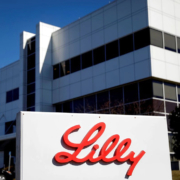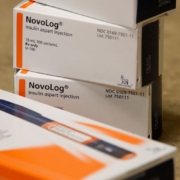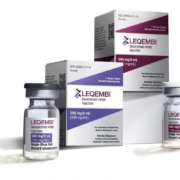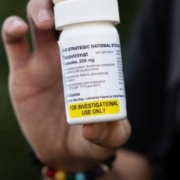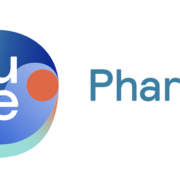FDA approves Eli Lilly’s donanemb to treat Alzheimer’s disease
FDA approves Eli Lilly’s donanemb to treat Alzheimer’s disease
Published: Jul 03, 2024
By Tyler Patchen
BioSpace
In one of the year’s most highly anticipated decisions, the FDA on Tuesday approved Eli Lilly’s donanemab, an anti-amyloid antibody designed as the third drug to modify the course of Alzheimer’s disease.
Donanemab, which will be marketed as Kisunla, follows Biogen and Eisai’s Aduhelm, approved in June 2021 but effectively pulled from the market in January, and Leqembi, greenlit in early 2023, which brought in $19 million for its makers in Q1.
The FDA’s decision comes less than a month after an advisory committee voted unanimously in donanemab’s favor.
Original story published June 24:
What Would a Donanemab Approval Mean for Leqembi?
Earlier this month, an FDA advisory committee determined that Eli Lilly’s anti-amyloid antibody donanemab is an effective treatment for Alzheimer’s disease and that its benefits to patients outweigh its risks. Experts are bullish on the therapy and say that approval for donanemab would also benefit the market for Biogen and Eisai’s Leqembi, another anti-amyloid antibody that was approved last year.
“This could be the first disease-modifying therapeutic drug class [for Alzheimer’s disease],” Myles Minter, a research analyst at William Blair, told BioSpace. “The more options you have available, the more companies you have [in] that market, getting people in for amyloid scans, getting people into infusion centers. I think a rising tide lifts all boats.”
Several experts who spoke with BioSpace expect donanemab to ultimately win approval.
“The FDA clearly has a pretty positive stance on the potential approval of donanemab,” Minter said, adding that briefing documents released ahead of the adcomm read “very favorably” for approval with a comprehensive label.
Donanemab Adcomm: Focus on Access
The anti-amyloid antibody did have some headwinds going into the adcomm, mainly stemming from questions raised in the briefing documents about trial design and safety. The FDA focused on Lilly’s use of its own integrated Alzheimer’s Disease Rating Scale (iADRS) as the primary Phase III endpoint, and the use of tau protein levels to determine who was enrolled in the study. Patients with no or very low levels of tau were excluded.
Despite the lack of clinical data surrounding the low- and no-tau population, adcomm members were swayed by biomarker data that showed a similar amyloid reduction in these populations, according to an analyst report from Evan Seigerman, managing director and senior research analyst at Bank of Montreal Capital Markets.
On the safety front, experts had expected more discussion around the rate of amyloid-related imaging abnormalities (ARIA), which was of significant concern during the adcomm for Biogen and Eisai’s Leqembi, also an anti-amyloid antibody. According to Lilly, ARIA was observed with donanemab, usually as a temporary swelling in the areas of the brain (ARIA-E) or as microhemorrhages (ARIA-H).
“I was more surprised about the general lack of discussion about ARIA” in the donanemab adcomm, Minter told BioSpace, noting the concern around the potential for strokes and contraindications with anticoagulants. “I was very surprised about that because donanemab does show a numerical increase in the incidence of ARIA [over the placebo].”
In the Phase III TRAILBLAZER-ALZ 2 study, ARIA-E occurred in 24% of patients, with 6.1% experiencing symptomatic ARIA-E, while ARIA-H occurred in 31.4% of donanemab-treated patients compared to 13.6% of those on placebo.
Paul Matteis, managing director and head of therapeutics research and biotechnology at Stifel, told BioSpace in an email that the discussion around ARIA could have been more nuanced and possibly less favorable for donanemab. Minter agreed, noting that there seems to be less of a risk of ARIA with Leqembi.
He noted that the ARIA monitoring protocol is still to be determined and may be more of a labeling issue. For Leqembi, enhanced clinical vigilance for ARIA is recommended during the first 14 weeks of treatment, according to the drug’s label.
Others were surprised that the adcomm’s focus was not on whether or not to approve donanemab but rather on its prescribing requirements.
“What stood out for me was not that the AdComm debated if there should be an approval, but what diagnostic needs should be levied for prescription, so that the burden on the doctors is least to guarantee wider access,” Rajesh Kumar, head of life sciences and healthcare equity research at HSBC, told BioSpace in an email.
Leqembi vs. Donanemab
If donanemab is approved, it will compete directly with Leqembi, which won full FDA approval last July.
In terms of potential sales, Kumar forecasts that donanemab could hit $8 billion at its peak, with a conservative estimate in the $4 billion range. Meanwhile, analysts have projected peak sales for Leqembi to be anywhere from $3 billion to $12.9 billion, according to a report from GlobalData.
The adcomm noted that there was a logistical advantage for donanemab, which is dosed once a month compared to every two weeks for Leqembi, according to Minter. Additionally, the regimen requires approximately 30 minutes of treatment followed by a 30-minute monitoring period, while Leqembi treatment involves a 30-minute to one-hour treatment duration followed by three hours of monitoring. On the flip side, if ARIA risk really is lower with Leqembi, that could factor in its favor.
The increased ARIA rate with donanemab “nullifies” some of the convenience advantages if patients require more MRI scans to detect the condition, Matteis added.
“I think there’s a place for both drugs, but our best guess would be [Leqembi] gets more share,” he said, noting market precedents in other neurology indications like multiple sclerosis, epilepsy and psychiatric conditions, where safer drugs “tend to get more traction, all else equal.”
Source: BioSpace


